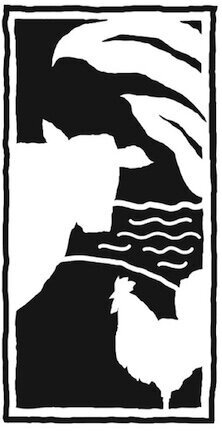Guide to Cooking with Pork Lard
Lard is
Lard is rendered pig fat, and leaf lard is the fat that surrounds the kidneys and loin. Pork lard is highly coveted in cultures around the world because it is not only delicious but also extremely versatile in the kitchen. Our lard is made from leaf fat from our pastured pigs and slowly warmed at low temperature creating a creamy texture and snow white appearance.
Cooking with Lard
Lard is used for baking, roasting, and frying. When baking with pork lard it creates flaky pastries, especially pie crusts and biscuits. Lard is, after all, the original Crisco. Leaf lard doesn’t leave much flavor behind so you don’t have to worry about a porky tasting pumpkin pie.
Roasting with lard creates a crispy outer crust which is especially nice on roasted potatoes and roast chicken. A quarter sized amount of lard rubbed on chicken, sprinkle on seasoning, and then roasted develops into a delightful crispy skin. The same can be said for potatoes tossed in lard and seasoning.
Lard doesn’t smoke at a high temperature so it’s wonderful for high heat cooking like frying. Fried chicken will never be the same once you start using lard for frying.
Lard is good for you
You don’t have to feel guilty adding lard to your cooking essentials because lard is healthier than you might think. Pure lard contains no trans fats and is 60 % monounsaturated fat, which is associated with a decreased risk of heart disease. Most of pork lard’s monounsaturated fat is oleic acid, a heart-healthy essential fatty acid found in olive oil and associated with decreasing LDLs, which has been found to lower “bad” cholesterol. So put down the butter and pass the lard!
Guide to cooking with beef tallow, guide to cooking with ghee, guide to cooking with coconut oil
How to store lard
Lard should be kept in an airtight container and we prefer it be kept in the refrigerator. In cooler climates it could work in a cabinet for 4-6 months, but in the refrigerator it can keep up to a year. Some people even freeze pork lard. When room temperature lard can liquify quickly, and when cool lard takes on a creamy texture similar to a spreadable butter.
Enjoy cooking with lard made from pastured pig leaf fat by baking, roasting, or frying. If you want to go super traditional, you can always take a little scoop of lard, whip it lightly with a fork blending in salt and spices to make a spreadable whipped lardo (ooh you so fancy). The delicate taste of pork lard is by far one of our favorite fats to cook with.


